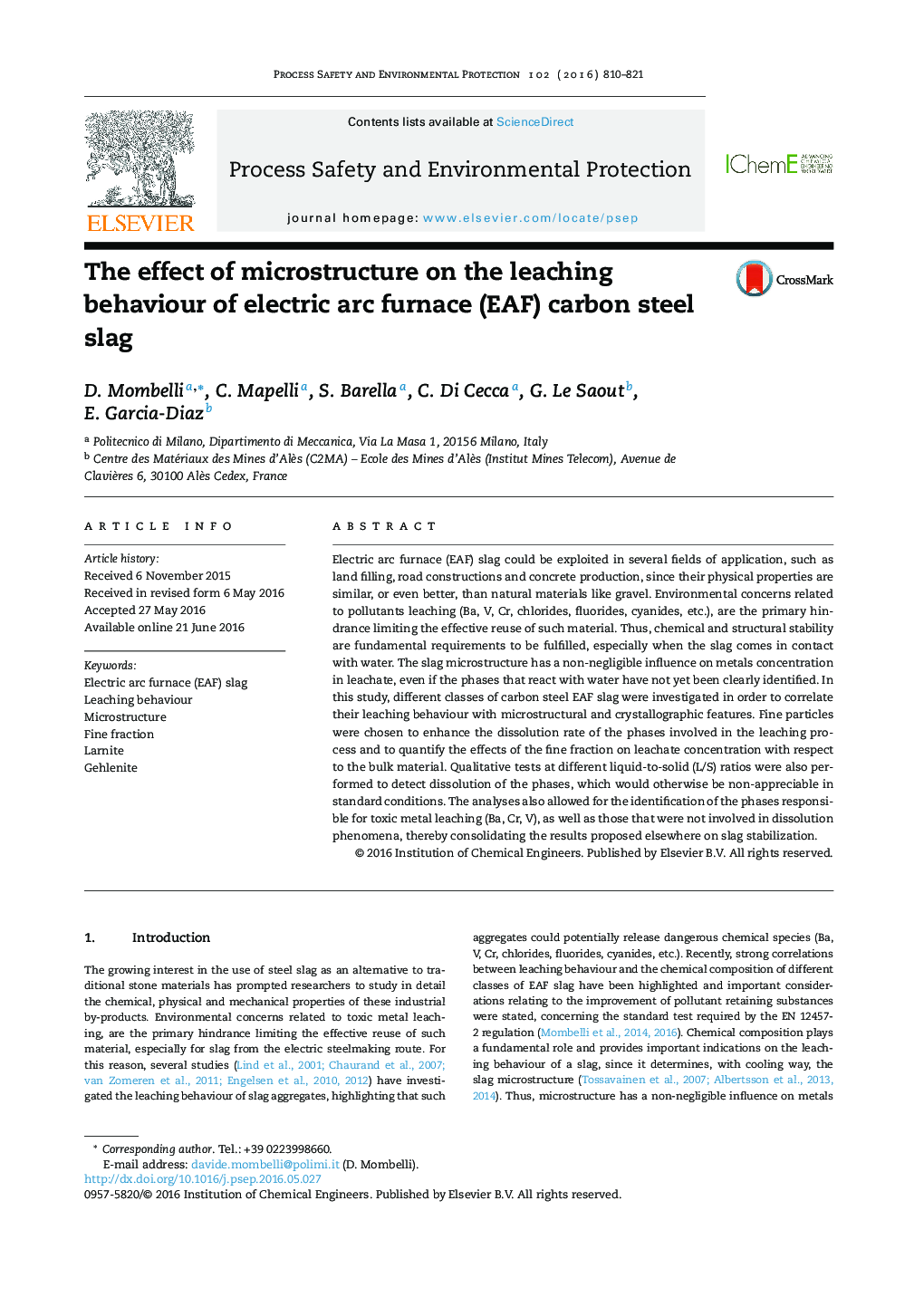| Article ID | Journal | Published Year | Pages | File Type |
|---|---|---|---|---|
| 588131 | Process Safety and Environmental Protection | 2016 | 12 Pages |
•Leaching tests were performed on fine particles (<100 μm) to enhance dissolution.•The role of the main crystalline phase on leaching behaviour was identified.•Gehlenite and kirschsteinite improve the slag resistance against leaching.•Liquid-on-solid ratio plays a key role on slag leaching behaviour.
Electric arc furnace (EAF) slag could be exploited in several fields of application, such as land filling, road constructions and concrete production, since their physical properties are similar, or even better, than natural materials like gravel. Environmental concerns related to pollutants leaching (Ba, V, Cr, chlorides, fluorides, cyanides, etc.), are the primary hindrance limiting the effective reuse of such material. Thus, chemical and structural stability are fundamental requirements to be fulfilled, especially when the slag comes in contact with water. The slag microstructure has a non-negligible influence on metals concentration in leachate, even if the phases that react with water have not yet been clearly identified. In this study, different classes of carbon steel EAF slag were investigated in order to correlate their leaching behaviour with microstructural and crystallographic features. Fine particles were chosen to enhance the dissolution rate of the phases involved in the leaching process and to quantify the effects of the fine fraction on leachate concentration with respect to the bulk material. Qualitative tests at different liquid-to-solid (L/S) ratios were also performed to detect dissolution of the phases, which would otherwise be non-appreciable in standard conditions. The analyses also allowed for the identification of the phases responsible for toxic metal leaching (Ba, Cr, V), as well as those that were not involved in dissolution phenomena, thereby consolidating the results proposed elsewhere on slag stabilization.
